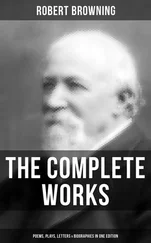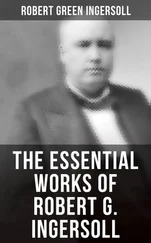But if that were all, no great harm would be done. If the peddling of drugs depended entirely—or even mostly—on Patent Medicine advertisers, the end of it would soon be in sight. But it doesn't. The worst offenders of all are the ones who, of all people, should know better—some of the doctors.
Understand, I don't mean all of them. And I don't mean the best of them. There are thousands of them like Dr. Woods Hutchinson who have the courage to get up and say that medicine itself cannot cure disease. That it never has cured disease. That Nature is the only Healer. Drugs can give you temporary relief from pain—yes. They can cleanse —yes. But as for curing anything, the drug is not made that can do it.
The principal good that the administering of a drug has is in its effect upon the mind of the patient. Men have been taught for so many years that drugging is the only way to cure disease, that when you give them something, they BELIEVE they are going to be cured, and to the extent that they believe, they ARE CURED.
The best proof of that is to let two patients suffering from the same complaint go to two different physicians—the one a doctor of the regular school, the other a homeopath. The regular doctor will administer a dose containing ten thousand times as much of the mother drug as the homeopath. In fact, there is so slight a trace of any drug in the homeopath's prescription that it might be called none at all. Yet it frequently happens that his patient will respond just as readily to his denatured dose as the other will to his drug.
Dr. Gour, in a recent issue of Pearson's Magazine , said: "A few years ago there appeared an article in the Atlantic Monthly written by a young woman physician who was with the Red Cross in Russia. Immediately following the Kerensky revolution, the Russian peasants who, for the first time in their lives, found that they could keep what they earned, began to think of going to doctors for ailments which had afflicted them for years, but which they could never before afford to have treated. Within two weeks’ time this young physician exhausted her supply of medicine. But the rush of peasant patients continued and she was reduced to the placebo idea of administering colored waters with a slight amount of a single drug—quinine, if I recall correctly. For several weeks she obtained such wonderful results in every conceivable form of affliction that she said her faith in specific medication was completely lost."
In a despatch from Rome to the New York Herald-Tribune , under date of June 15, 1926, I read:
"Under the skeptical eyes of local doctors Don Luigi Garofalo, a priest in the Quarto sector of Naples, alleges that he is curing all the ills that flesh is heir to, from pneumonia to broken bones, by a practical application of the theory derived from the text, 'Man is of dust and to dust he shall return.' Don Luigi argues that from a homeopathic viewpoint dust should be a curative element. So from dust taken from the reddish earth near Pozznoli, which contains traces of sulphur and copper, he makes pills for the afflicted, but he contends that any other earth will do.
"The cures, most of which have been effected by means of the red earth, include the healing of broken limbs, tubercular cases, toothache, internal lesions, heart diseases, mumps, paralysis and fevers."
Of course, it is not to be inferred from this that reliance can be placed upon red earth—or any other kind of earth—to cure you of any ill. But it shows that even so common, ordinary a thing as a bit of dirt can be used to arouse people from the lethargic condition in which sickness so frequently leaves them, and give them the power to help themselves.
Take another case. Your doctor prescribes regular doses of some drug. You take it once. It has the desired effect. You take it again. The effect is not quite so pronounced. You keep it up—and in a short time the drug seems to have lost its efficacy .
Why? The same chemical elements are there. And if you mix the same chemical elements in a retort, you will get the same results whether you do it once or a thousand times. Why doesn't it work the same way with drugs and your body?
Because the strongest factor in bringing about the desired effect in the beginning was your BELIEF—yours and that of your doctor. But as you kept on and on, your belief began to falter, until presently it died away altogether. You may have hoped , but the active belief suggestions to your subconscious mind had stopped carrying conviction.
Dr. Richard C. Cabot, Professor of Medicine at Harvard University, in a recent address, declared that "three-quarters of all illnesses are cured without the victims even knowing they have had them.
"Proof of this contention is to be found in post-mortem examinations, which time after time reveal indelible and unmistakable traces of disease which the subject has conquered all unknowingly. Ninety per cent of all typhoid cures itself, as does 75 per cent of all pneumonia. In fact, out of a total of 215 diseases known to medical science, there are only about eight or nine which doctors conquer—the rest conquer themselves."
He went on to say that—"If nature, assisted by the proper mental and emotional moods, is capable of curing an ulcer in three or four weeks, why isn't it possible for the same force to heal a similar ulcer in a few minutes, when the curative processes have been speeded up abnormally?"
Great physicians have, on numerous occasions, maintained that there is no science in medicating people. In Preventive Medicine—yes. In Surgery. In Obstetrics. In a score of different lines that fall under the heading of the medical profession.
But the art of drugging is little ahead of where it was in the Middle Ages, when Egyptian mummies were in great demand among druggists and "powdered Pharaoh" was considered the greatest remedy for any ill that flesh was heir to.
Every day brings the discovery of some new drug, and the consequent dictum that the remedy previously prescribed was all a mistake—that it had little or no real value whatever.
One doctor says: "A medicine that will not kill you if you take an overdose is no good." Another: "The most prominent doctors now claim that there is not a single drug will do what it has been prescribed for in the past."
Dr.. Douglas White, writing in The Churchman , sums it up thus:
"All cure of every disease is spiritual. Healing can never be imposed from without by either the surgeon or physician; it is the living organism which, helped by the skill of the one or the other, is enabled to work its way back to health. The whole principle of healing in all cases is the vis medicatrix naturae . And when we speak of nature, we are only personifying the principle of life which Christians call God."
In the Medical Record of September 25, 1920, Dr. Joseph Byrne, Professor of Neurology at Fordham University Medical School, said:
"At a conservative estimate it may be admitted that of all the ailments for which relief is sought, 90% or over are self limited and tend to get well. It may also be admitted that in over 90% of all human ailments, the psychic is the dominating factor."
In other words, Mind is the Healer. Drugs can sometimes make its work easier by removing obstructions, by killing off parasites. But the regular use of drugs is far more likely to harm than to heal. We might well quote to the druggists the old Hindoo proverb:
"God gives the mango;
The farmer plants die seed.
God cures the patient;
The doctor takes the fees."
In the Great War, the one drug that most proved its worth was Iodine. And what is Iodine? A cleanser . It killed germs. It cleansed wounds. But it has no healing power. And no healing was expected of it. It did all that was asked. It cauterized—cleansed—so that Nature (Mind) could do its own healing, unobstructed.
Читать дальше












